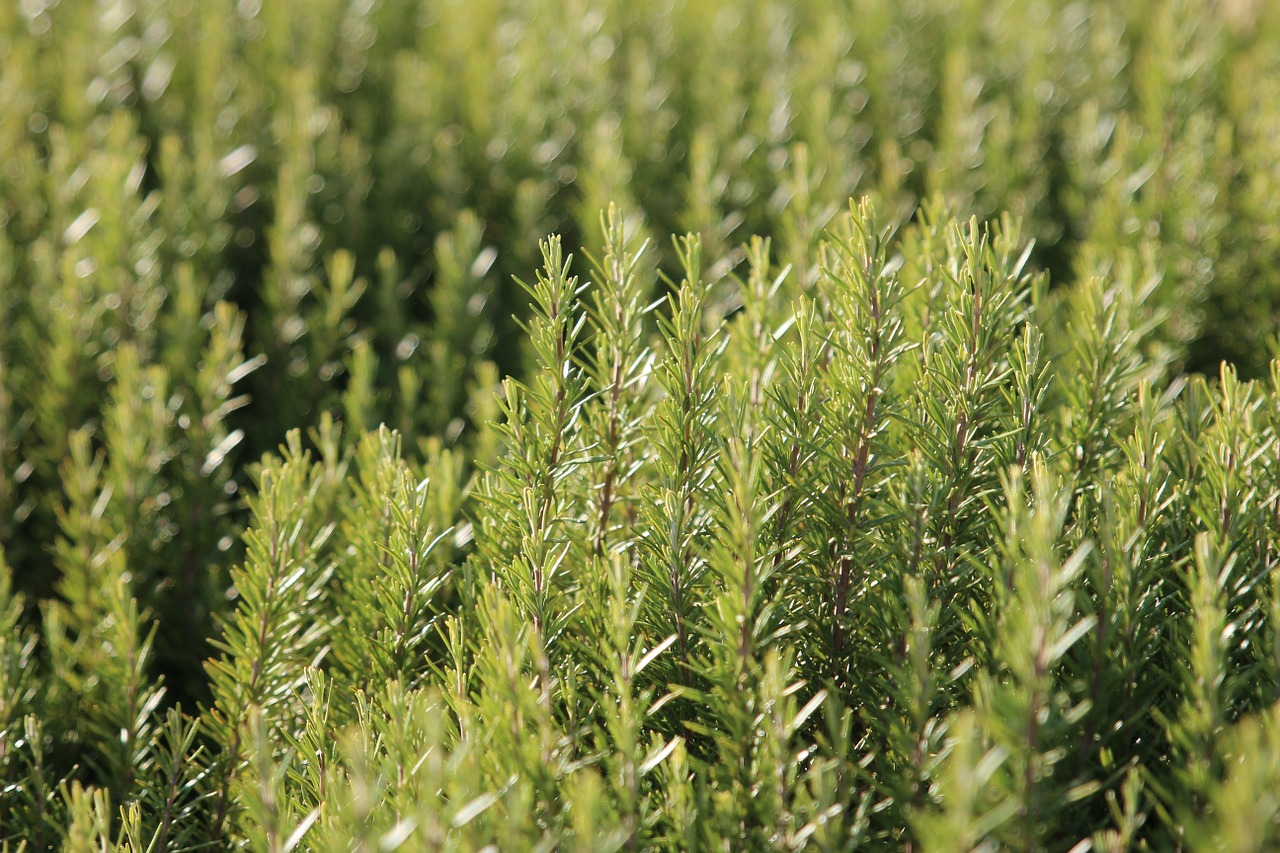
Growing, Propagating & Harvesting Rosemary
The undemanding rosemary plant is a real eye-catcher in any garden with its beautiful flowers and aromatic leaves. The leaves contain valuable ingredients and can be used fresh or dried. In our latitudes, it can be grown in the garden and in a pot. You can find out how to plant rosemary and what to look out for when caring for it in this article.
This Article Contains:
- Growing Rosemary: What You Need to Know
- The Right Location
- Planting Rosemary in the Garden & Pot: Planting Distance, Timing
- Companion Plants for Rosemary
- Mixed Crop Planting Plan With Rosemary: Your Herb Bed
- Sowing Rosemary: Tips for Successful Sowing
- Fertilize & Care for Rosemary in the Garden or Pot
- Cutting Rosemary: How to Do It
- My Rosemary Is Not Growing - Why?
- Harvesting Rosemary
- Tips for Overwintering Rosemary
- Frequently Asked Questions About Planting Rosemary
Quick Overview
Planting Rosemary: Location & Planting Distance
- Location: warm, full sun location with moderately dry, well-drained soil
- Cultivation: From mid-March
- Direct sowing outdoors: End of May/beginning of June
- Sowing depth: Light germinator, only lightly cover with soil
- Germination temperature: 16 to 24 ° C/60.8 to 75.2 ° F
- Planting distance: 40 cm/15.7 in
- Row spacing: 50 cm/19.7 in
Companion Plants in the Bed
- Good companions: lavender, thyme, hyssop, basil, blackberry, carrots, oregano, marigold, sage
- Bad companions: spring onions, lovage, turnip, chives, Jerusalem artichoke
Harvesting Rosemary Correctly
- Only harvest non-lignified shoot tips or individual leaves with a sharp knife or by hand.
- You can harvest all year round, even in winter. However, you should refrain from harvesting during heavy frost.
Growing Rosemary: What You Need to Know
Rosemary (Rosmarinus officinalis) is a classic Mediterranean culinary and medicinal herb. It belongs to the Lamiaceae family. Rosemary blooms from March to around the beginning of May and you can admire its beautiful blue-violet to pink-white flowers, which attract numerous insects and provide them with food. The evergreen, bushy semi-shrub grows as a perennial and can reach heights of up to two meters, depending on the variety and location.
The Right Location
In its native country, rosemary grows in barren, stony landscapes. For this reason, it prefers moderately dry, well-drained soils, which may also be calcareous. It is well adapted to drought and accustomed to plenty of sun and warmth. For this reason, you should choose a warm, sunny spot with loose soil that cannot become waterlogged. Rosemary can be grown both in pots and in the garden. However, some varieties are only partially hardy, so growing them in pots is better. You can then simply move the shrub to a warmer place to overwinter.
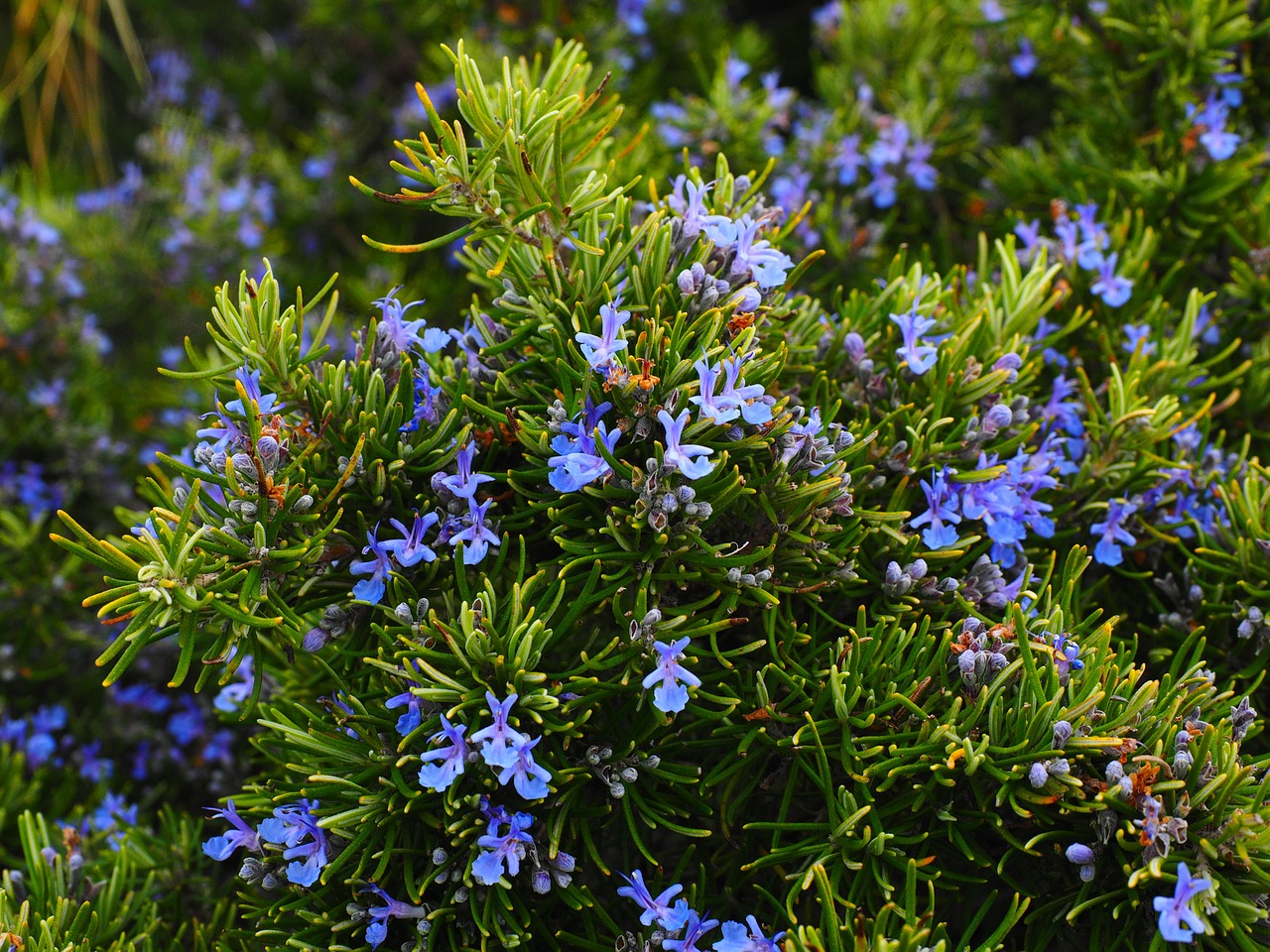
Planting Rosemary in the Garden & Pot: Planting Distance, Timing
From May it will be warm enough and the rosemary can be planted out in the garden. Give your rosemary plant enough space: the planting distance is 40 cm/15.7 in and the row spacing 50 cm/29.7 in. As rosemary is very vigorous, the more space the better. In its native country, there are sometimes 2 m/2.2 yd high hedges of rosemary.
Can I Plant Rosemary in a Pot?
Rosemary can be successfully grown in pots, which is particularly practical for balcony and patio gardeners or in regions with harsh winters. Size is a decisive factor when choosing a pot, as rosemary needs sufficient space for its roots to grow. A good rule of thumb is to choose a pot with a diameter of at least 30 - 40 cm/11.8 - 15.8 in and a similar depth to give the root system enough room to spread out. Make sure that the pot has sufficient drainage holes to prevent waterlogging. Growing rosemary in a pot requires a little more attention in terms of watering and fertilizing, but it also allows better control over the growing conditions and makes it easier to overwinter the plant.
Which Soil for Rosemary?
You should prepare the soil so that the semi-shrub feels at home. Soil that is too heavy should be mixed with sand and gravel, soil that is too light with a little compost. Rosemary plants that are planted directly in the garden benefit from lean soil, so they take root faster and more reliably. The same applies to growing in a pot: use a herb soil that is as low in nutrients as possible and make sure that the water can always drain away well.
Companion Plants for Rosemary
Rosemary is a good companion in the vegetable patch as it contains many strongly scented essential oils that keep pests away from the patch. It is also a fairly robust plant. But only as long as it has good growing conditions. As rosemary requires very little water, unlike most vegetable plants, it is better suited to mixed cultivation with other herbs. In a herb bed, rosemary also attracts beneficial insects to your garden and provides valuable food and habitat. You can find out which plants are good and bad companions for rosemary in the following table.
| Good Companion Plants | Bad Companion Plants |
|---|---|
| basil | chives |
| blackberry | jerusalem artichoke |
| carrots | lovage |
| coriander | onion |
| lavender | turnip |
| marigold | |
| oregano | |
| sage | |
| thyme |
Our tip: To grow as many herbs as possible in a space-saving way, it is a good idea to create a herb spiral. This allows you to create different zones in which herbs from different locations can grow.
Mixed Crop Planting Plan With Rosemary: Your Herb Bed
To give you an idea of what a herb spiral with rosemary and other herbs could look like, we have prepared some digital bed plans for your herb snail. Maybe there's something for you!
Our tip: You can read about the other Benefits of Mixed Cultivation in the Herb Bed here. You can also find a table with an overview of which herbs go well together.

Would You Like to Plan Your Herb Bed?
With our bed planner, you can easily plan a colourful mixed crop. Good and bad companion plants are displayed directly and you get tips on crop rotation!
Plan Your Bed NowSowing Rosemary: Tips for Successful Sowing
Young rosemary plants in particular are very sensitive to the cold and must be grown in advance on the windowsill. The small seeds can be sown from mid-March. As rosemary is a light germinator , they are only lightly covered with soil and then moistened regularly. Germination can now take up to five weeks in a warm, bright place. Alternatively, they can be sown directly outdoors from the end of May/beginning of June. With germination temperatures between 16 and 24 °C/60.8 and 75.2 ° F, rosemary usually finds it relatively difficult to germinate in the garden in our latitudes. In addition, rosemary seeds do not germinate particularly reliably, so it is often easier to buy a plant from an organic grocer at the market.
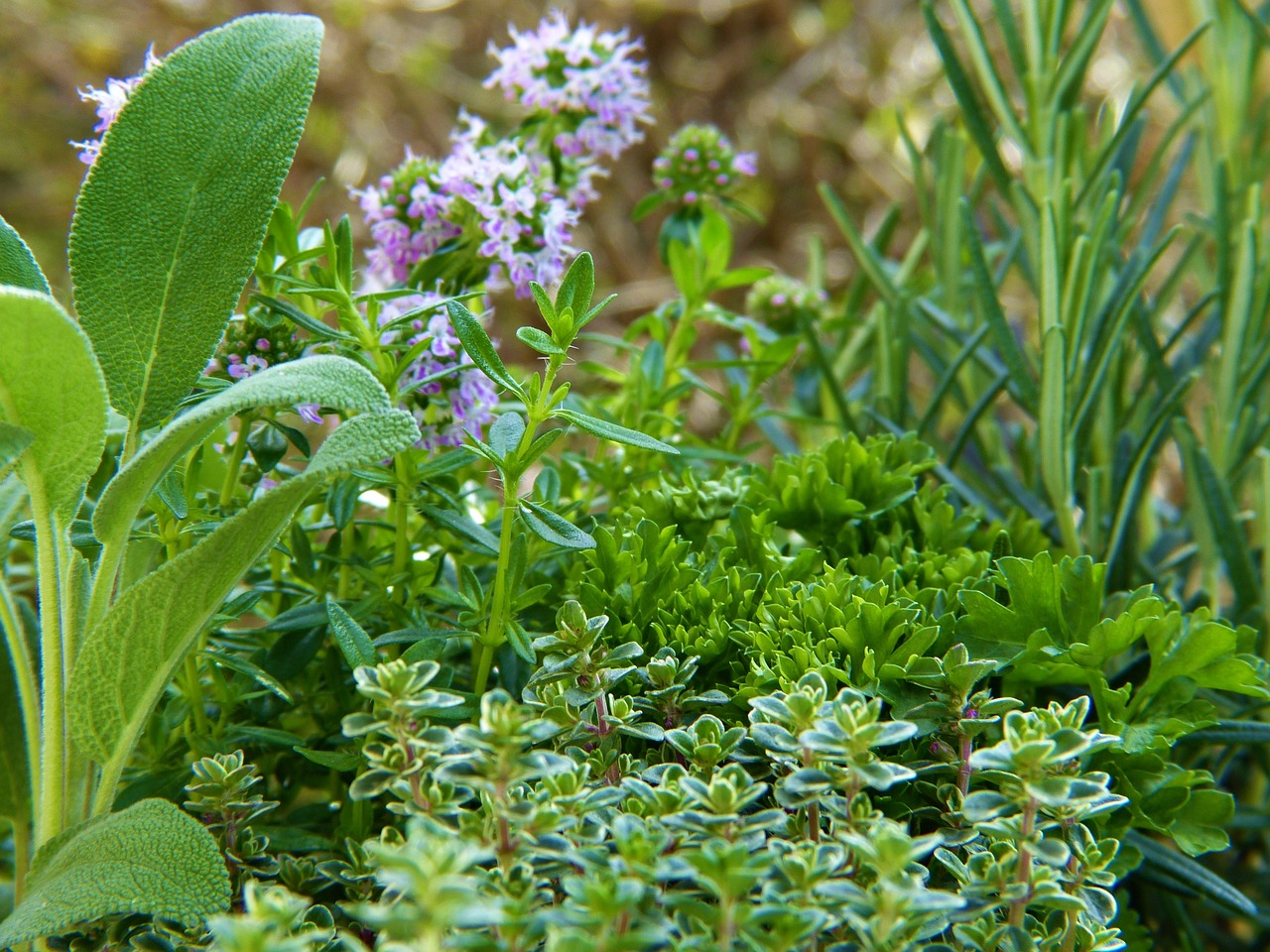
Fertilize & Care for Rosemary in the Garden or Pot
Rosemary is a largely low-maintenance plant that grows healthily and vigorously with a few basic care measures. You can find out what these are below:
- Fertilize: Rosemary is very undemanding. No additional fertilizer is required outdoors. Potted plants, on the other hand, should be fertilized a little two to three times a season
- Watering: Rosemary is well adapted to drought and therefore requires only moderate but regular watering. This robust herb is not very susceptible to disease, except when waterlogged. This can quickly lead to root rot or fungal diseases. You should also make sure that the soil dries out quickly when caring for the plant in a pot. Here you need to water more frequently, especially in midsummer. The advantage of a pot is that waterlogging is less likely to occur.
- Plant protection: You don't need to worry about unwanted guests, as the rosemary plant's essential oils usually keep them away. Rosemary rarely suffers from an infestation of aphids, mealybugs or spider mites, although this is often caused by an incorrect water supply.
- Repotting: The older the shrub, the less it likes to be repotted. However, if it is necessary, be particularly careful.
Cutting Rosemary: How to Do It
Regular pruning is an important maintenance measure to promote the growth and health of your rosemary. This keeps the shrub in shape and allows it to develop into a stately bush or rosemary hedge over the years. On the one hand, you can influence and direct the growth habit by pruning. It also prevents lignification caused by too much dead wood. Otherwise, it will senesce, which means that deadwood will accumulate in the bush. This makes it easier for diseases and pathogens to penetrate the plant.
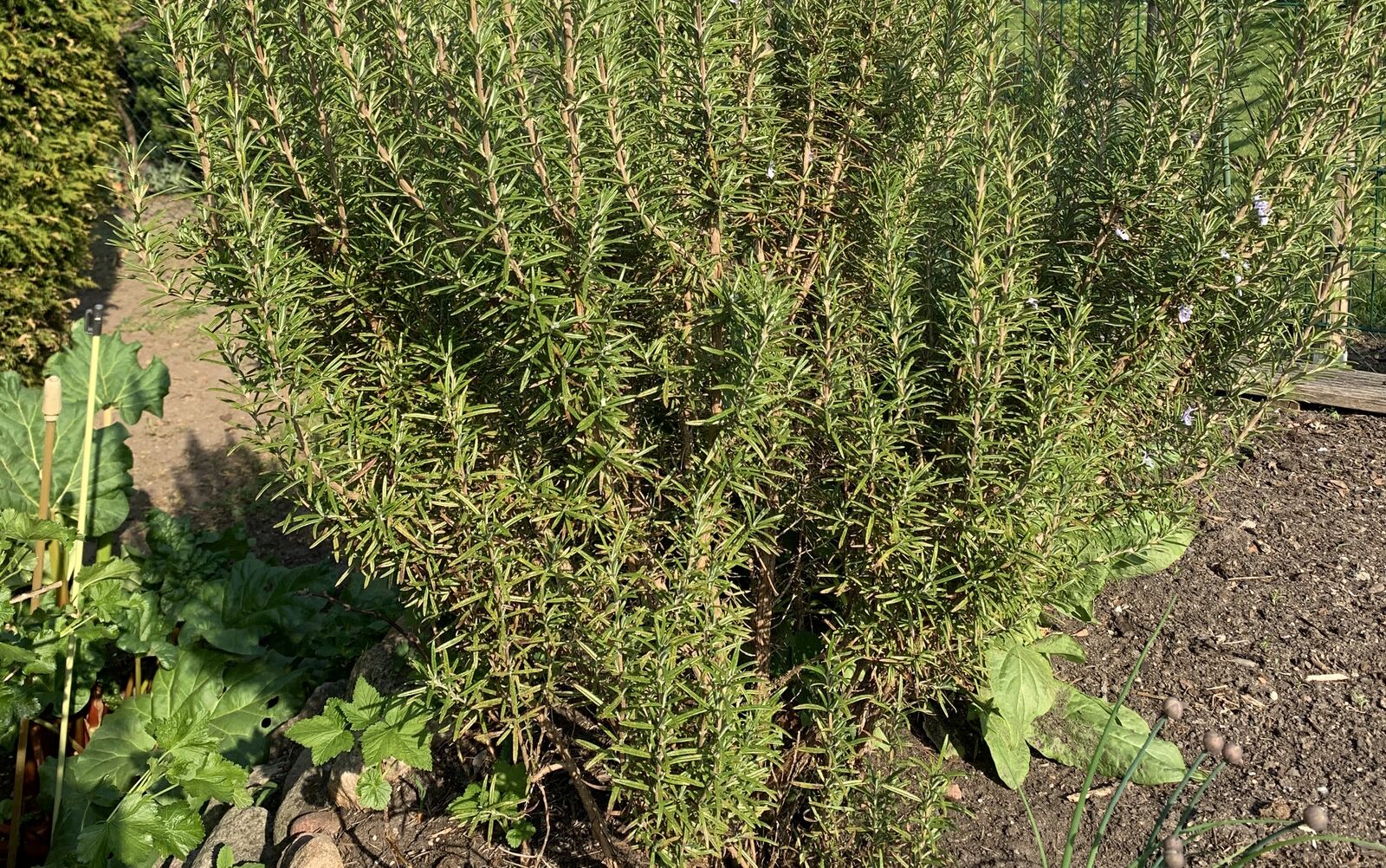
When to Cut Rosemary?
It is best to prune your rosemary in spring after flowering. Rosemary flowers from the end of March to the beginning of May, depending on the variety, location and weather. After that, all shoots from the previous year should be pruned close to the ground or to the start of the woody shoot. You should leave most of the old, living wood standing and shorten a maximum of one third, otherwise you will reduce the growth of the rosemary plant. You should also remove the dead wood completely so that the bush is better aerated.
My Rosemary Is Not Growing - Why?
If your rosemary is not growing, this could be due to incorrect care, an unsuitable location or unfavorable growing conditions. Make sure that the location offers sufficient sunlight, as rosemary is a sun-loving plant. The soil should be well-drained and not too rich in nutrients to avoid waterlogging and over-fertilization. Rosemary prefers rather dry conditions, so it is important to water moderately and make sure that the soil can dry out between waterings. It is also advisable to protect the plant from extreme temperatures and frost. To do this, you could protect the plant with a fleece, for example. Alternatively, you can also plant rosemary in a pot that you can easily move indoors or to a sheltered spot in winter. Correct these factors to promote the growth of your rosemary and provide it with optimal conditions if it fails to grow. This also includes choosing plant companions next to which the rosemary likes to grow.
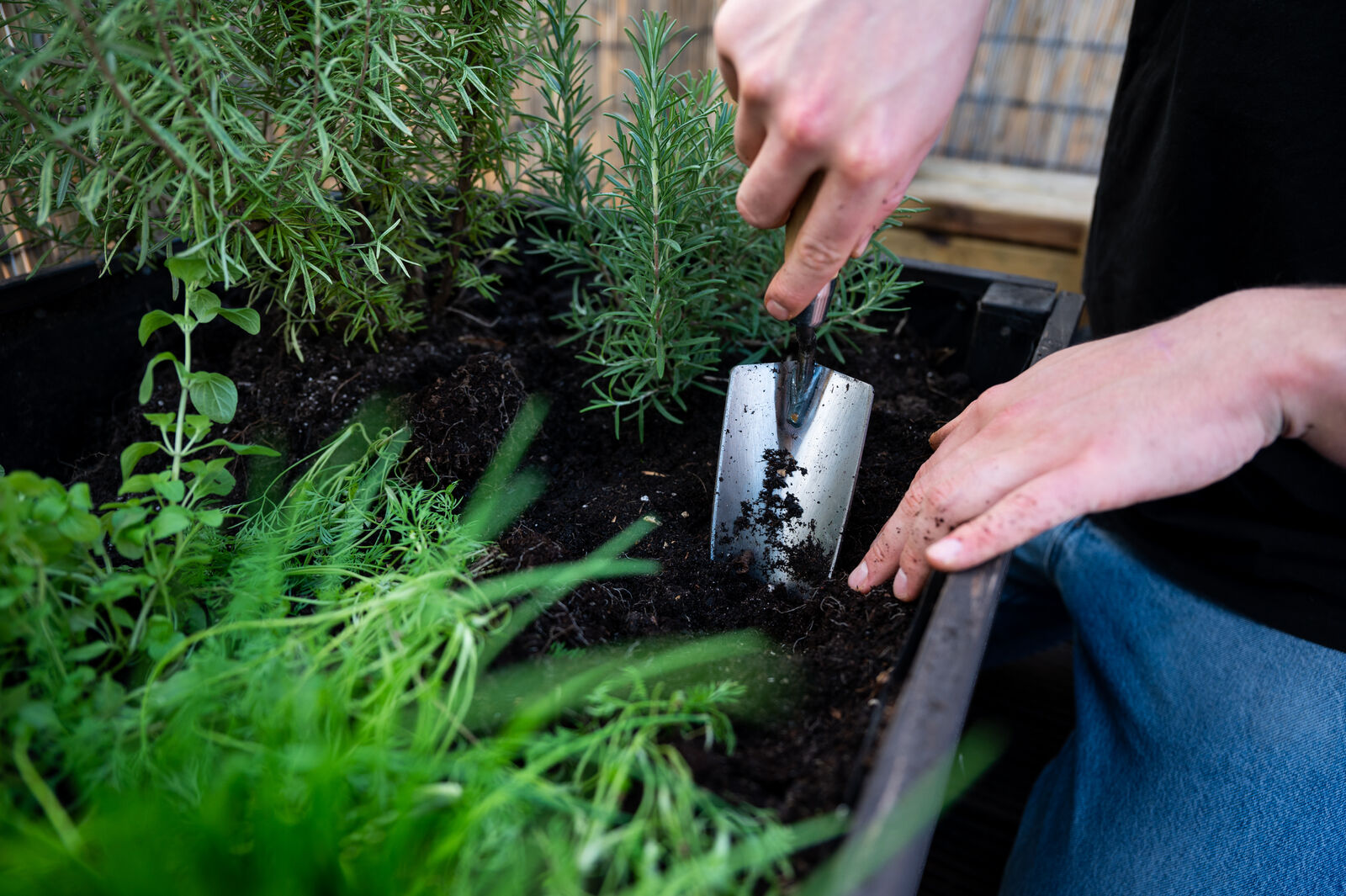
Harvesting Rosemary
With your own rosemary in the garden, you can harvest fresh from the bush all year round. To do this, cut off individual leaves or entire shoot tips with a sharp knife. Only parts that do not yet have a woody stem are harvested. The leaves can either be used fresh for cooking and seasoning, dried or preserved in oil.
Can You Harvest Rosemary in Winter?
Rosemary is an evergreen plant and can also be grown outdoors in our latitudes with the right variety. It keeps its leaves all year round, which is why you can also harvest it in winter. However, you should be careful in extreme weather conditions or frost and it is better to refrain from harvesting so as not to damage the plant.
Tips for Overwintering Rosemary
To successfully overwinter your rosemary, there are a few important points that you should bear in mind. First of all, it is advisable to move the plant to a sheltered place before the first frosts to protect it from cold damage. If your rosemary is growing outdoors, you can cover it with a frost protection mat or fleece to protect it from extreme temperatures.
If you are growing rosemary in a pot, it is advisable to place the pot in a cool, bright and frost-free place, such as a conservatory, garage or cool hallway. Make sure that the temperature in the winter quarters is between 5 and 10 ° C/41 and 50 ° F. During the winter months, it is important to water the rosemary only moderately to avoid waterlogging, which can damage the root system. Keep an eye on the moisture content of the soil and only water when it has dried out on the surface.
Winter-Hardy Varieties for Outdoor Cultivation:
- Particularly hardy varieties are Rosmarinus officinalis 'Arp' and 'Hill Hardy'. If you live in mid-latitudes with cool winters, then you should definitely choose a hardy variety for outdoor cultivation.
- 'Tuscan Blue' shows some winter hardiness, but should be protected in case of heavy frost or extreme weather events.
Despite choosing a hardy rosemary variety, you should also protect it from extreme temperatures. This is particularly recommended during longer periods of frost to keep the plants healthy and strong.
We hope you have gained a brief overview of planting rosemary, caring for it and harvesting it, and wish you every success in trying it out! If you have any questions or comments, please write to us at [email protected].
Want to get helpful gardening tips all year round and plan your own beds in the best possible way? Then register here or download the Fryd app for Android or iOS.
Fryd - Your digital bed planner
Cover picture by Samueles on Pixaybay.

Marie
Marie is an agronomist. She is particularly interested in the sustainable and organic cultivation of vegetables and other plants. In her own garden, she gained experience and likes to try things out to learn from nature. She is particularly interested in the values and principles of permaculture, in order to contribute not only to the well-being of nature, but also to the well-being of people and future generations.
Learn MoreCurrent Topics in the Community
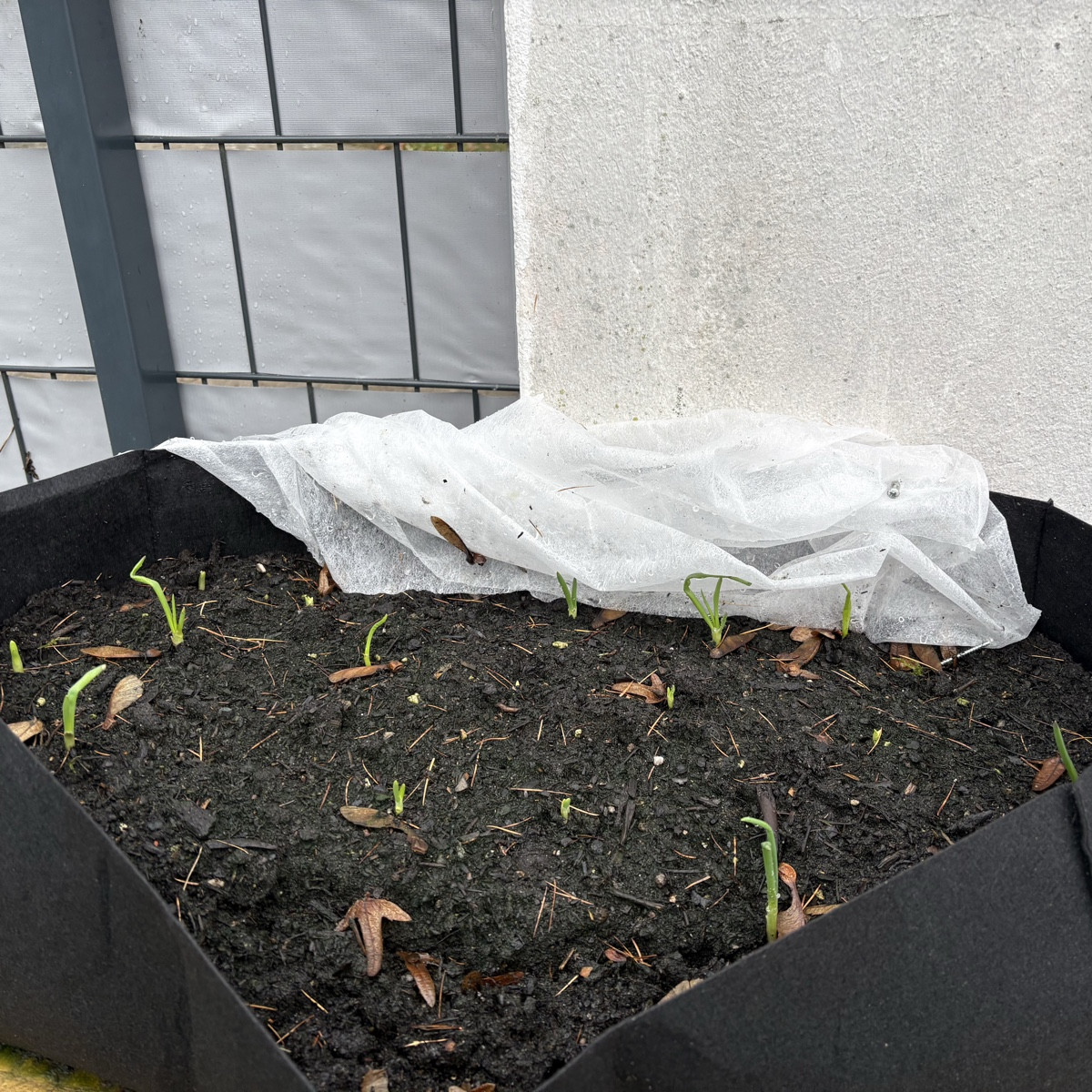
My winter onions are also growing quite well. They are of the Red Cross variety. I planted them on 28.10 in a felt pot 60x30x20 cm
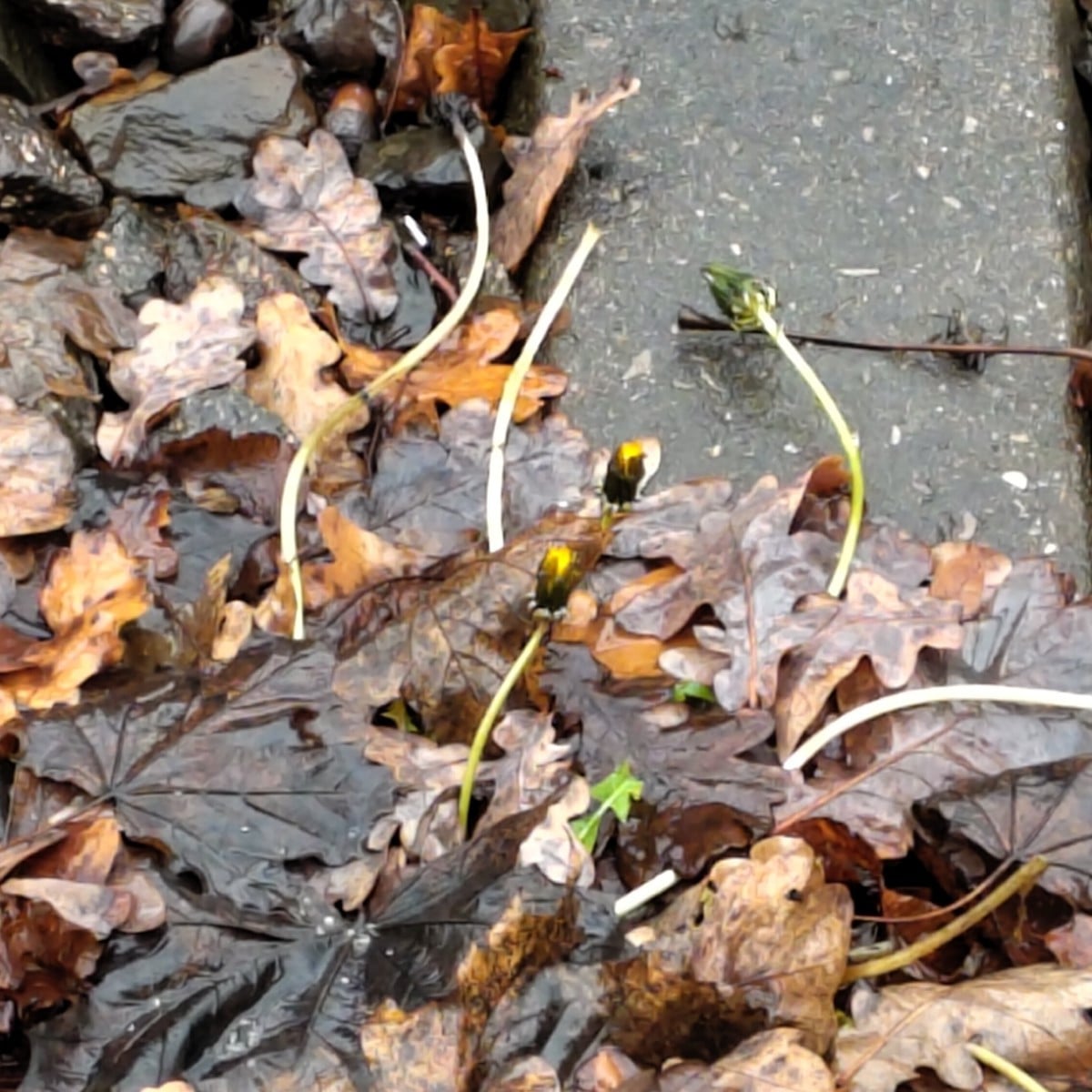
Liked 4 times
Another post from the curiosities section: I noticed this dandelion at the streetcar stop in a 'wintry' 13°C weather. It obviously thinks that snow and double-digit frost were enough winter and is now pushing new flowers through the foliage. It's a shame it's by the tracks, otherwise it would probably have ended up in my salad. 😋

Liked 15 times
As a suggestion for those who eat citrus fruits and have some time in the evening: simply cut a few simple shapes out of them with a sharp knife and dry them on the heater. The next day it was bone dry in our house ;)
Show 3 answersPopular Articles

Overwintering Parsley: How to Do It Successfully

How to Grow Lettuce in Winter: Varieties, Sowing, Harvesting

Growing Sage Plant: Tips for Sowing and Harvesting

What Herbs Can Be Planted Together?

Create & Design a Permaculture Garden

Overwintering Plants: Tubs, Pots and Raised Beds

Pruning, Fertilizing & Propagating Currants: Care Tips

Pruning Raspberries: How to Do It

Vegetable Garden With Greenhouse: How to Use Greenhouse Effect

Winterizing Beds and the Garden: How to Do It
FAQ
What is the right location for rosemary?
The ideal location for rosemary is a warm, sunny spot with moderately dry, well-drained soil.
Rosemary likes it warm and sunny. It should therefore only be planted out from mid-May, after the last frosts. You should keep a planting distance of 40 x 50 cm/15.7 x 19.7 in.
What are good companions for rosemary?
Good neighbors for rosemary in the flower bed include lavender, thyme, hyssop, basil, blackberry, carrots, oregano, marigold and sage. You can find out more in the article.
Which soil to use for rosemary?
Rosemary prefers light, well-drained soil - it does not like waterlogging at all. Lean soil with a high sand content is best. In a pot, it is best to use a nutrient-poor herb soil.
Rosemary is a Mediterranean herb and is not normally hardy. However, there are some varieties that can survive frosts and colder winters, such as 'Arp' or 'Hill Hardy'.